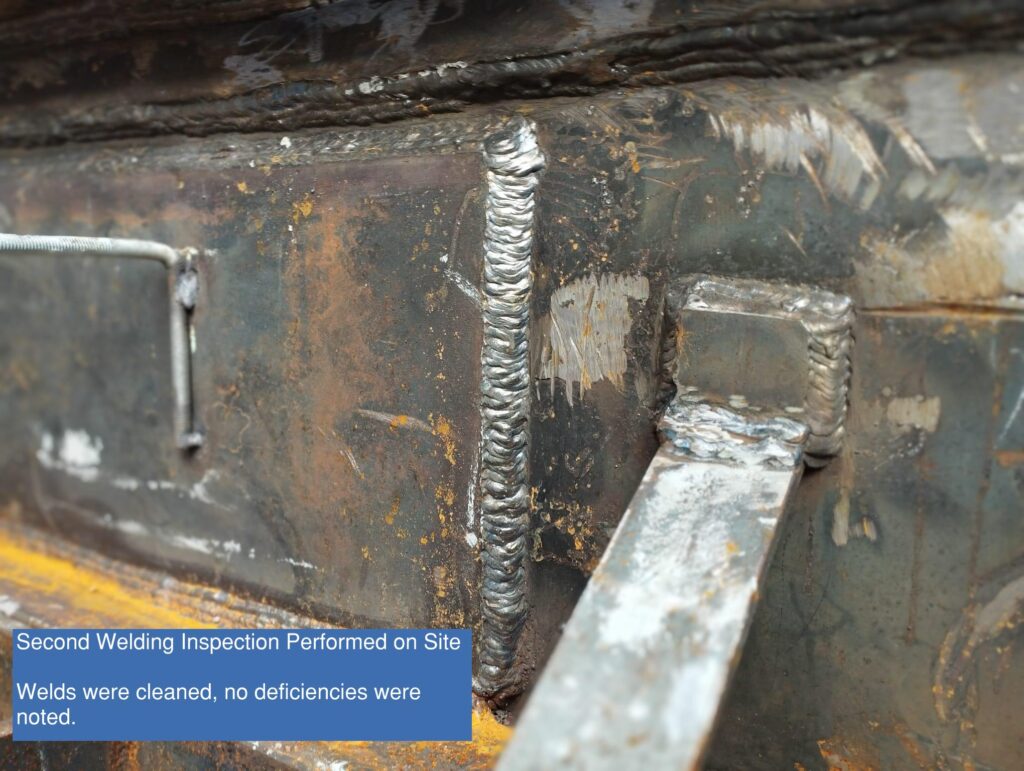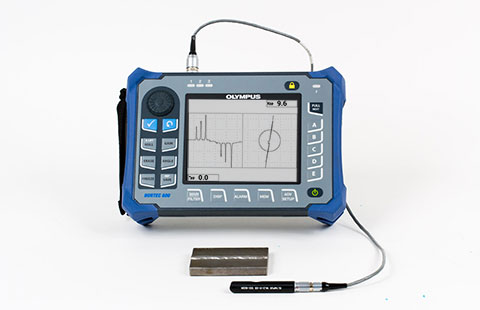Understanding the Process of Welding Inspection Racine for Ideal Results
Understanding the Process of Welding Inspection Racine for Ideal Results
Blog Article
Ingenious Methods to Fillet Weld Examination and Testing: Enhancing Weld Quality and Compliance Specifications
In the world of welding, the high quality and honesty of fillet welds play an important duty in guaranteeing the architectural stability and integrity of numerous commercial components. With the constant drive for enhanced efficiency and conformity with stringent criteria, the exploration of ingenious methods to fillet weld inspection and testing has come to be important.
Advanced Non-Destructive Screening Techniques
Making use of cutting edge modern technologies, advanced non-destructive screening approaches play a vital role in guaranteeing the stability and high quality of fillet welds. These methods, such as phased variety ultrasonic screening (PAUT) and magnetic fragment testing (MPT), deal thorough insights into the weld's interior framework without creating any kind of damage to the material. PAUT, for instance, makes use of several ultrasonic components to evaluate the weld from various angles, supplying a detailed visualization of prospective flaws like lack of fusion or splits.
Similarly, MPT is effective in finding surface-breaking defects by applying a magnetic field and iron bits to the weld area. This approach is especially beneficial for determining gaps that might compromise the weld's strength. By using these advanced non-destructive screening techniques, weld examiners can accurately examine the top quality of fillet welds, ensuring conformity with market standards and guidelines. The capacity to identify flaws at an early stage not only boosts weld quality yet also avoids pricey rework or failures in architectural stability, underscoring the significance of these innovative screening techniques in welding inspections.
Robotics and Automation in Assessment
The combination of robotics and automation has actually reinvented the inspection process for fillet welds, enhancing efficiency and precision in quality evaluation. Robotics offer accurate control and repeatability in inspecting welds, guaranteeing reputable and constant results. Automated systems can be configured to comply with specific evaluation courses, making certain detailed coverage of welds and lowering the threat of human error.
Robotic examination systems geared up with innovative sensors can spot and measure weld attributes with high accuracy, offering detailed data for analysis. These systems can identify problems such as splits, lack of fusion, and porosity, allowing prompt corrective actions to be taken. Additionally, robotics and automation enable real-time data collection and evaluation, providing immediate responses to drivers and helping with quick decision-making procedures.
Additionally, making use of robotics and automation in fillet weld inspection enhances total productivity by minimizing inspection times and raising inspection throughput. By simplifying the examination procedure, suppliers can make certain weld high quality and compliance standards are satisfied efficiently, ultimately resulting in set you back financial savings and enhanced item top quality.
Utilizing Expert System for Evaluation
Expert system plays an essential role in improving the effectiveness and precision of evaluation in fillet weld assessment procedures. By using the power of AI, assessors can simplify the analysis of weld quality and conformity requirements, resulting in much more reputable and specific outcomes. AI algorithms can swiftly process large amounts of data from weld inspections, identifying problems or disparities that may be testing to relate to the naked eye. This sophisticated innovation allows real-time monitoring of weld top quality, enabling immediate corrective activities to be taken if any type of problems are found.
Additionally, AI systems can pick up from previous evaluation data, continuously improving their capability to recognize potential problems and inconsistencies in fillet welds. This adaptive understanding capability improves the overall quality control process, minimizing the likelihood of human error and making certain that welds satisfy the called for requirements. By integrating expert system right into fillet weld evaluation, industries can accomplish higher degrees of efficiency, uniformity, and conformity in their inspection methods.
Portable Tools for On-Site Examination
 Enhancing area assessment performance, the fostering of portable tools transforms on-site assessment procedures for fillet welds. These tools use versatility and ease, allowing assessors to perform extensive assessments in different areas, consisting of remote or difficult atmospheres. Portable devices such as ultrasonic screening gadgets, magnetic particle examination equipment, and digital radiography systems give real-time information and high-resolution imaging capacities, making it possible for fast decision-making and immediate feedback on weld high quality.
Enhancing area assessment performance, the fostering of portable tools transforms on-site assessment procedures for fillet welds. These tools use versatility and ease, allowing assessors to perform extensive assessments in different areas, consisting of remote or difficult atmospheres. Portable devices such as ultrasonic screening gadgets, magnetic particle examination equipment, and digital radiography systems give real-time information and high-resolution imaging capacities, making it possible for fast decision-making and immediate feedback on weld high quality.One significant advantage of mobile devices is their capability to enhance examination treatments, minimizing downtime and boosting general productivity. Assessors can conveniently transfer these tools to different job websites, getting rid of the demand for delivering hefty equipment or components to off-site centers. Additionally, the mobility of these tools advertises cost-effectiveness by lessening transportation expenditures and speeding up assessment timelines.
Furthermore, the usage of portable tools for on-site inspection advertises positive high quality control actions, as assessors can immediately determine and deal with any kind of potential welding problems or disparities. By integrating these innovative innovations into on-site examination methods, welding professionals can guarantee conformity with industry criteria and improve weld quality, inevitably causing improved architectural find more stability and safety in numerous welding applications.
Assimilation of Data Administration Systems
Having enhanced on-site examination procedures with the usage of portable devices, the next stage includes the seamless combination of data management systems to better improve efficiency and information evaluation abilities in fillet weld assessment and testing. Welding Inspection Racine. By incorporating data management systems right into the inspection procedure, organizations can enhance data collection, storage space, and evaluation. This integration enables real-time monitoring of weld quality, prompt recognition of problems, and punctual decision-making to correct any problems that may emerge throughout the assessment procedure
Data management systems play an important function in systematizing examination data, assisting in very easy gain access to for accredited workers, and making sure information stability and safety and security. With the integration of these systems, assessors can generate thorough records, track historic data for trend analysis, and boost overall procedure efficiency. The assimilation of information monitoring systems allows seamless communication between different stakeholders involved in the assessment process, fostering cooperation and boosting general top quality control measures. Ultimately, the combination of data monitoring systems offers to elevate the criteria of fillet weld examination and testing, guaranteeing conformity with sector guidelines and improving weld high quality.
Conclusion
To conclude, innovative approaches to fillet weld inspection and screening have actually dramatically improved weld quality and compliance requirements. Advanced non-destructive screening approaches, robotics, automation, synthetic intelligence, portable tools, and information monitoring systems have actually reinvented the way weld evaluations are conducted. By making use of these modern technologies, industries can make certain that welds satisfy the called for quality requirements and policies, eventually boosting overall performance and security in welding procedures.

By utilizing these advanced see here non-destructive testing strategies, weld assessors can properly assess the high quality of fillet welds, guaranteeing compliance with industry criteria and policies. Portable tools such as ultrasonic screening devices, magnetic fragment evaluation equipment, and digital radiography systems give real-time information and high-resolution imaging capabilities, making it possible for fast decision-making and prompt comments on weld quality.
Having optimized on-site evaluation processes with the application of mobile devices, the next stage entails the seamless combination of information monitoring systems to better enhance performance and data analysis abilities in fillet weld examination and testing (Welding Inspection Racine). Ultimately, the combination of data administration systems offers to elevate the requirements of fillet weld evaluation and testing, making sure compliance with sector policies and improving weld top quality
 In conclusion, ingenious strategies to fillet weld evaluation click for more info and screening have dramatically enhanced weld high quality and conformity criteria.
In conclusion, ingenious strategies to fillet weld evaluation click for more info and screening have dramatically enhanced weld high quality and conformity criteria.Report this page